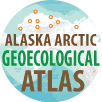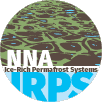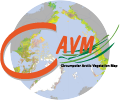
Course Archive
- All Past Courses
- BIOL 474
- BIOL 475/689
- BIOL 492/692
- BIOL 493/693
- BIOL 697
- 2010 IARC Field School
- Fulbright Scholar Lectures, Masaryk University
- Current and Recent Courses
Fulbright Scholar Lectures, Czech Republic
Winter 2011: Course Information - Syllabus (PDF) - Course Materials - Lectures
Lectures
- Lecture 1: Overview of Arctic Ecosystems: The role of climate, permafrost, and topography PDF
- Readings:
- Callaghan, T.V., Bjorn, L.O., Chapin III, F.S., et al. 2005. Chapter 7, Arctic tundra and polar desert ecosystems. Arctic Climate Impact Assessment - Scientific Report. Cambridge University Press. Cambridge. pp. 243-352. PDF
- Bliss, L.C. 1997. Arctic Ecosystems of North America. Polar and Alpine Tundra. Elsevier. Amsterdam. pp. 551-683. PDF
- Chernov, Y.I., Matveyeva, N.V. 1997. Arctic ecosystems in Russia. Polar and Alpine Tundra. Elvesier. Amsterdam.3 pp. 361-507. PDF
- Readings:
- Lecture 2: The role of soil pH in Arctic Vegetation: Loess ecosystems and the Mammoth Steppe PDF
- Readings:
- Walker, D.A., Everett, K.R. 1991. Loess ecosystems of northern Alaska: regional gradient and toposequence at Prudhoe Bay. Ecological Monographs. 61:(4):437-464. PDF
- Walker, D.A., Auerbach, N.A., Bockheim, J.G., et al. 1998. Energy and trace-gas fluxes across a soil pH boundary in the Arctic. Nature. 394:469-472. PDF
- Walker, D.A., Bockheim, J.G., Chapin, F.S., III, et al. 2001. Calcium-rich tundra, wildlife, and ''the Mammoth Steppe''. Quaternary Science Reviews. 20:149-163. PDF
- Readings:
- Lecture 3: Biocomplexity of small patterned-ground features PDF, PPT
- Readings:
- Walker, D.A., Epstein, H.E., Romanovsky, V.E., et al. 2008. Arctic patterned-ground ecosystems: A synthesis of field studies and models along a North American Arctic Transect. Journal of Geophysical Research - Biogeosciences. 113:G03S01. PDF
- Walker, D.A., Kuss, P., Epstein, H.E., Kade, A.N., Vonlanthen, C.M., Raynolds, M.K. Daniels, F.J.A. 2011 in press, Vegetation and patterned-ground relationships along the Arctic bioclimate gradient in North America. Applied Vegetation Science.
- Readings:
- Lecture 4: Social-ecological effects of oil and gas development in the Arctic: Comparison of the Prudhoe Bay, Alaska and Bovanenkova, Russia regions PDF
- Readings:
- NRC, Orians, G., Albert, T., et al. 2003. Cumulative Environmental Effects of Oil and Gas Activities on Alaska's North Slope. National Academies Press. Washington, D.C.: pp: 288. PDF
- Walker, D.A., Forbes, B.C., Leibman, M.O., et al. 2011. Cumulative effects of rapid land-cover and land-use changes on the Yamal Peninsula, Russia. Eurasian Arctic Land Cover and Land Use in a Changing Climate. Springer. New York.VI pp. 206-236. PDF
- Readings:
- Lecture 5: Plant to planet mapping of Arctic Vegetation: the Arctic Geobotanical Atlas PDF
- Readings:
- Dangermond, J., Harnden, E. 1990. Map data standardization: a methodology for integrating thematic cartographic data before automation. ARC News. 12:(2):16-19. PDF
- Raynolds, M.K., Walker, D.A., Maier, H.A. 2006. Alaska Arctic Tundra Vegetation Map. 1:4,000,000. U.S. Fish and Wildlife Service. Anchorage, AK. PDF
- Walker, D.A. 1999. An integrated vegetation mapping approach for northern Alaska (1:4 M scale). International Journal of Remote Sensing. 20:(15-16):2895-2920. PDF
- Walker, D.A., Maier, H.A. 2008. Vegetation in the Vicinity of the Toolik Lake Field Station, Alaska. Biological Papers of the University of Alaska, No. 28, Institute of Arctic Biolo. PDF
- Walker, D.A., Raynolds, M.K., Maier, H.A., et al. 2009. Circumpolar geobotanical mapping: a web-based plant-to-planet approach for vegetation-change analysis in the Arctic. Mapping and Monitoring of Nordic Vegetation and Landscapes, Hveragerði, Iceland, 16-18 September. 4. PDF
- Walker, D.A., Raynolds, M.K., Daniëls, F.J.A., et al. 2005. The Circumpolar Arctic Vegetation Map. Journal of Vegetation Science. 16:(3):267-282. PDF
- Readings:
- Lecture 6:
Greening of the Arctic: Climate change and circumpolar Arctic vegetation PDF
- Readings:
- Bhatt, U.S., Walker, D.A., Raynolds, M.K., et al. 2010. Circumpolar Arctic tundra vegetation change is linked to sea-ice decline. Earth Interactions. 14:(8):1-20. PDF
- Readings:







